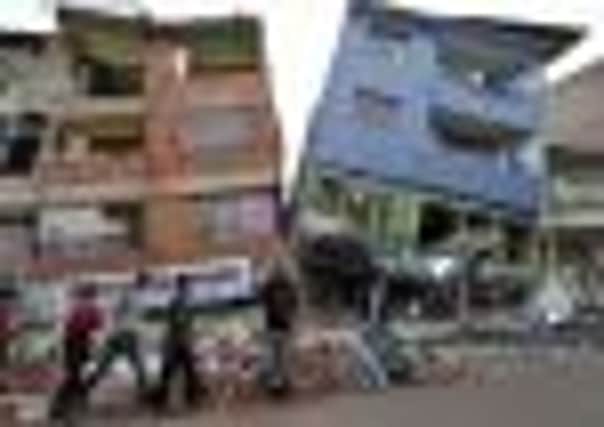‘Quake negligence amounts to murder’


Three days after the devastating quake in eastern Turkey, a teacher and a university student were rescued from ruined buildings, but searchers said hopes of finding anyone else alive were diminishing.
Excavators began clearing debris from some collapsed buildings in Ercis after searchers removed bodies and determined there were no other survivors.
Advertisement
Hide AdAdvertisement
Hide AdIn the capital, Ankara, yesterday, prime minister Recep Tayyip Erdogan said Turkey had not learned enough from past earthquakes that toppled poorly constructed buildings, trapping people inside.
The 7.2-magnitude quake killed at least 460 people.
Mr Erdogan said: “When we look at the wreckage, we see how the material used is of bad quality. We see that people pay the price for concrete that virtually turned to sand, or for weakened concrete blocks on the ground floors.
“Municipalities, constructors and supervisors should now see that their negligence amounts to murder.”
He said: “Despite all previous disasters, we see that the appeals were not heeded.”
Desperate survivors fought over aid and blocked aid shipments, while health officials warned of increase in cases of diarrhoea, especially among children.
“We don’t have any other sign of life,” said rescuer Riza Birkan. “We are concentrating on recovering bodies.”
Gozde Bahar, 27, an English-language teacher, was pulled out of a ruined building yesterday. Her mother watched the rescue operation in tears. The Anatolia news agency said her heart stopped at a field hospital, but doctors revived her.
Earlier, rescuers also pulled out 18-year old student Eyup Erdem, using tiny cameras mounted on sticks to locate him.
Advertisement
Hide AdAdvertisement
Hide AdThe two, both rescued in Ercis – the worst-hit area in the tremors that also rattled Iran and Armenia – were the last to be pulled out alive.
Some 40 people were pulled out alive from collapsed buildings on Tuesday. But the pockets of jubilation were tempered by many more discoveries of bodies by thousands of aid workers.
Gerald Rockenshaub, disaster response manager at the World Health Organisation, said the first 48 to 72 hours were crucial for rescues and the chances of finding survivors decreased significantly after that.
People could survive without food for a week or so, but having access to water is critical, especially for the elderly and infants, he said.
Health officials said they had detected an increase in cases of diarrhoea, especially among the children, and urged survivors to drink bottled water until authorities can determine whether the tap water may be contaminated.
Some 2,000 buildings collapsed and 1,350 people were injured. The fact that the quake hit in daytime, when many people were out of their homes, averted an even worse disaster.
Some 800 students at a school in Ercis, which crumbled, leaving only its near-intact roof flat on the ground, were probably saved because the quake hit on a Sunday.
Close to 500 aftershocks have rattled the area, according to Turkey’s Kandilli seismology centre.
Advertisement
Hide AdAdvertisement
Hide AdThe region is mostly-Kurdish populated and an area where Kurdish rebels are waging an armed campaign for autonomy from Turkey.
Turkey lies in one of the world’s most active seismic zones and is crossed by numerous fault lines. In 1999, two earthquakes with a magnitude of more than seven struck north-western Turkey, killing about 18,000 people.
Istanbul, the country’s largest city with more than 12 million inhabitants, lies in the north-west of the country near a major fault line, and experts fear that tens of thousands could be killed if a major earthquake struck there.